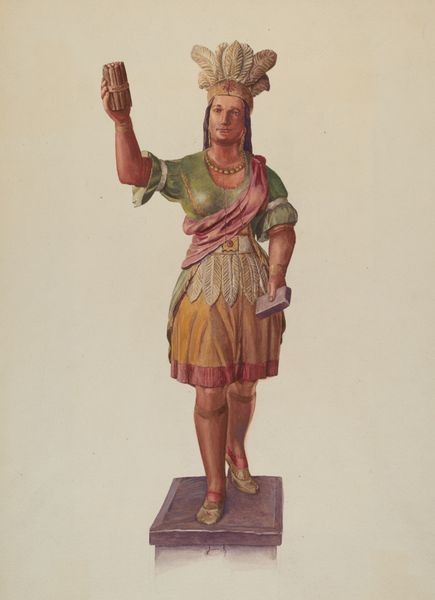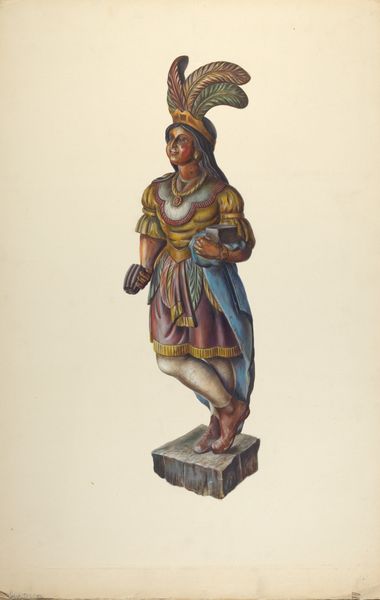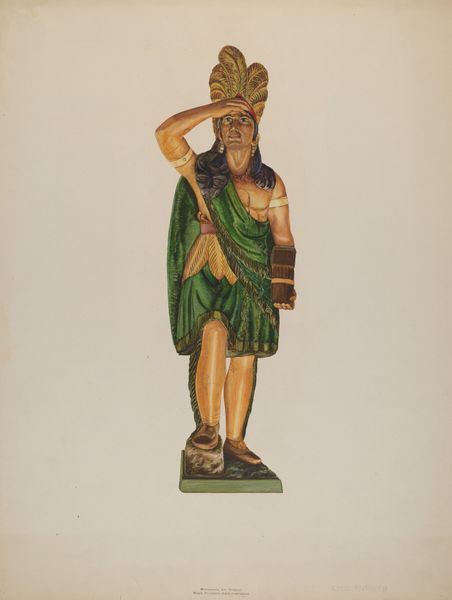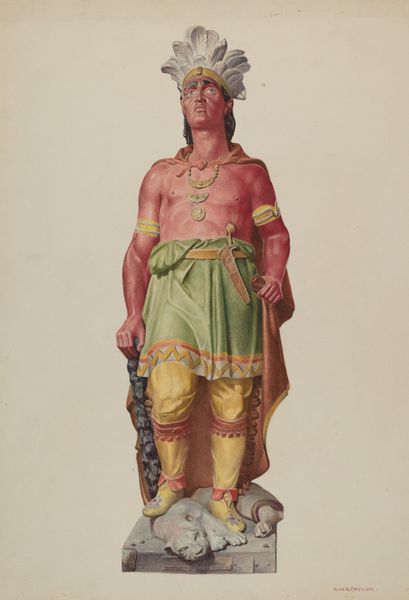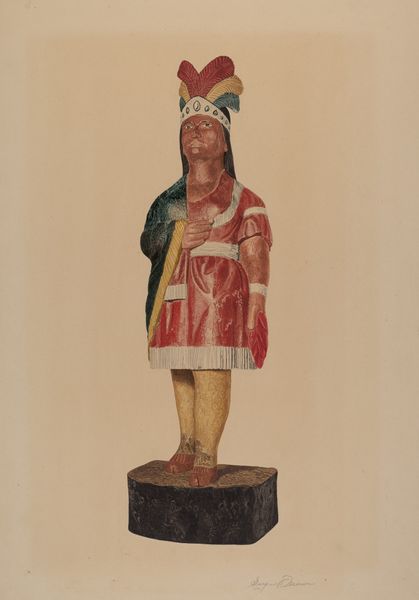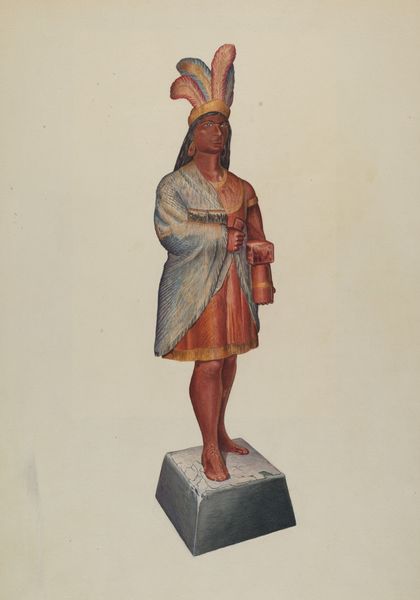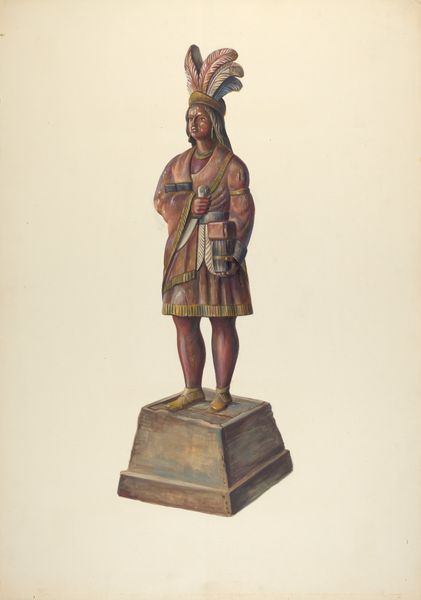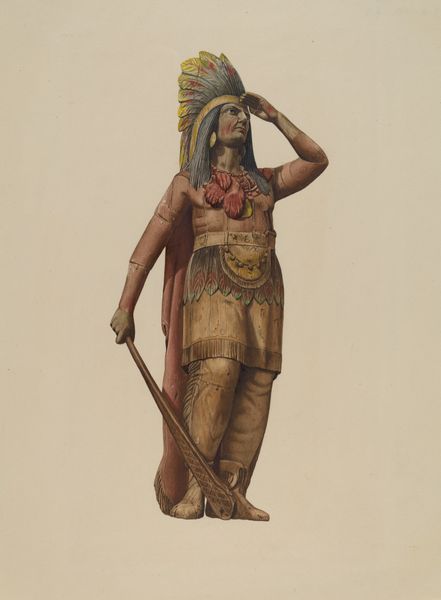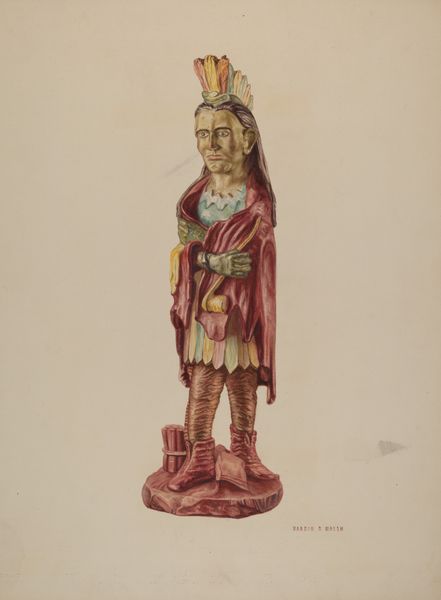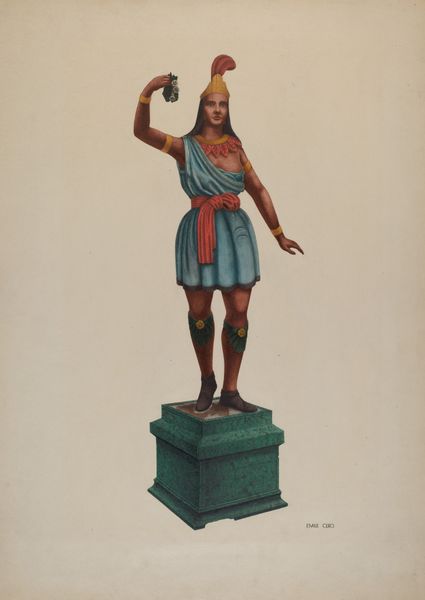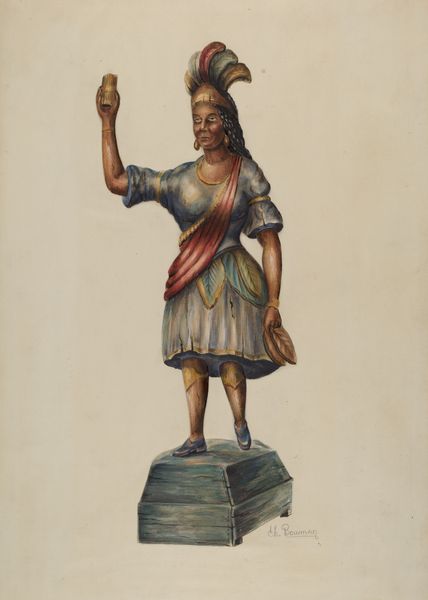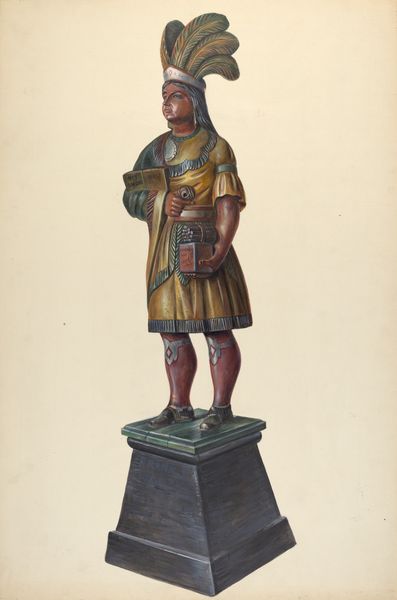
painting
#
portrait
#
painting
#
figuration
Dimensions: overall: 61 x 45.1 cm (24 x 17 3/4 in.)
Copyright: National Gallery of Art: CC0 1.0
Curator: Standing before us is "Cigar Store Indian", a watercolor by Robert W.R. Taylor, created sometime between 1935 and 1942. It is an example of American Regionalism. Editor: My first impression is of a bittersweet grandeur. There's a palpable sense of stoicism in this figure, but also a kind of tragic…objectification? Like a noble warrior frozen as a mascot. Curator: That’s astute. The "cigar store Indian" figure itself is rife with the complex politics of representation and appropriation. Originally meant to draw customers, these figures are a potent symbol of the commodification of Native American identity. Taylor's choice to depict it during this period, especially as a work in watercolor, adds layers to its interpretation. Editor: Watercolor, yeah… it’s interesting. It makes it feel… fragile. Almost ghostly. Like the memory of something real, turned into something flimsy. Was Taylor trying to say something about the fading presence of Native Americans in the American consciousness? Curator: Exactly. The choice of medium evokes a sense of delicacy, highlighting the contrast between the romanticized image and the harsh realities of cultural displacement and historical trauma faced by Indigenous communities. Taylor was documenting aspects of American culture during a tumultuous era, yet we must recognize that this portrayal can reinforce harmful stereotypes and perpetuate the erasure of Native voices. Editor: I keep getting hung up on the turtles in the statue's base. What's that about? Curator: Symbolic additions to these statues were fairly common. The turtles represent endurance, and some Northeast Native American traditions view the turtle as bearing the world on its back. By including the turtles on the base of the statue, perhaps it elevates the figure to some degree? Yet this figure also reinforces cultural appropriation that cannot be forgotten or excused. Editor: Seeing this, knowing the history behind these figures... it makes me feel conflicted. Like I’m looking at a beautiful painting with a really ugly story. Curator: Precisely. It forces us to confront the complicated and often painful aspects of our shared history. Art allows us to engage with these narratives, even when they challenge our perceptions. Editor: Well, I’m walking away from this with a whole new level of…discomfort, I guess. And a strong need to maybe read up a little more. Thanks. Curator: An honest and crucial takeaway. This dialogue is the exact outcome Taylor would've wanted from audiences in museums everywhere.
Comments
No comments
Be the first to comment and join the conversation on the ultimate creative platform.
